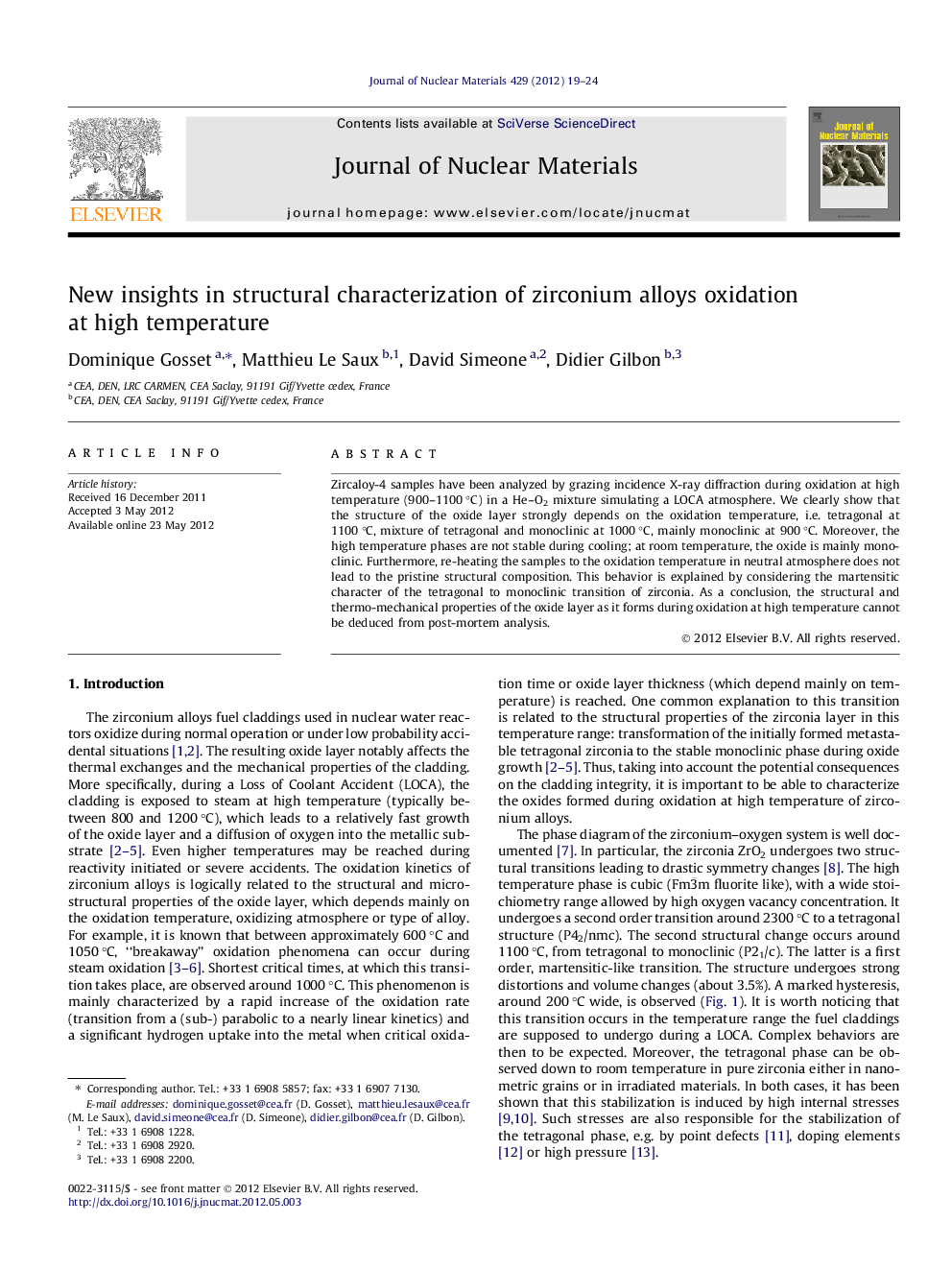| Article ID | Journal | Published Year | Pages | File Type |
|---|---|---|---|---|
| 1566107 | Journal of Nuclear Materials | 2012 | 6 Pages |
Zircaloy-4 samples have been analyzed by grazing incidence X-ray diffraction during oxidation at high temperature (900–1100 °C) in a He–O2 mixture simulating a LOCA atmosphere. We clearly show that the structure of the oxide layer strongly depends on the oxidation temperature, i.e. tetragonal at 1100 °C, mixture of tetragonal and monoclinic at 1000 °C, mainly monoclinic at 900 °C. Moreover, the high temperature phases are not stable during cooling; at room temperature, the oxide is mainly monoclinic. Furthermore, re-heating the samples to the oxidation temperature in neutral atmosphere does not lead to the pristine structural composition. This behavior is explained by considering the martensitic character of the tetragonal to monoclinic transition of zirconia. As a conclusion, the structural and thermo-mechanical properties of the oxide layer as it forms during oxidation at high temperature cannot be deduced from post-mortem analysis.
